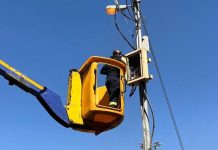Africa-Press – South-Africa. Government has unveiled an ambitious plan to introduce universal digital connectivity to SA households, with a target of making up to 50G of data per month available to every home by 2025.
The goal is outlined in the National Infrastructure Plan 2050, published last week, which shows disparities in internet access for households between provinces, as well as uncompetitive fixed-broadband speeds. It further highlights the high cost of data, particularly for prepaid mobile subscribers. The NIP has set a target of availing 10GB monthly to homes by 2023/4 and 50GB to homes by 2025/6, with an accelerated focus on enhancing service delivery with eHealth and eEducation. “By 2030, 100% of the population should have easy access to affordable broadband of at least 10 Mbps. All government buildings should have high-speed broadband of at least 100 Mbps, and where relevant participate in leveraging this to underserved areas and communities,” it said.The plan is aligned with the goals of the National Development Plan. The amount of R30 billion to R80 billion will be raised to finance the rollout of government broadband and services in the medium term.In terms of the plan, high-speed broadband should be available in underserved areas; all government buildings should be connected with high-speed broadband; and all government buildings will offer low-income users free Wi-Fi.But government has acknowledged challenges in the current digital programmes, including the “slow delivery and constrained finances” in the state-run South Africa Connect, which is tasked with rolling out the internet to public facilities.The challenges at Connect SA have seen budgets for the programme being cut, with about R581 million allocated over the 2020/21 to 2022/23 financial period.”State capacity in ICT is weak in respect of design and procurement. There has been institutional instability across the ICT state institutions, ministers and directors-general have changed almost annually over the past 12 years,” it noted.Key pillars of improving digital communication infrastructure by 2050 include:Making high-speed broadband will be universally accessible;Enabling competitive and universally accessible broadband;Improving public sector capacity to drive the required policy agenda;Creating a robust information and communications technology skills base; and,Allowing private sector participation to achieve universal broadband access.Only 10% of the population currently has access to the internet at home or access through public facilities and internet penetration varies significantly by region, with Limpopo having the lowest level of broadband connectivity. Poor progress in digital inclusion has been blamed, in part, on high prices.”While broadband access improved, its accessibility was still poor. The percentage of households with at least one person who had access to the internet rose from 33% to 64.7%, almost completely explained by mobile connectivity.””While there is excellent broadband availability across the country, it is not easily accessible to most households in a way that would indicate meaningful digital connectivity.”
For More News And Analysis About South-Africa Follow Africa-Press






